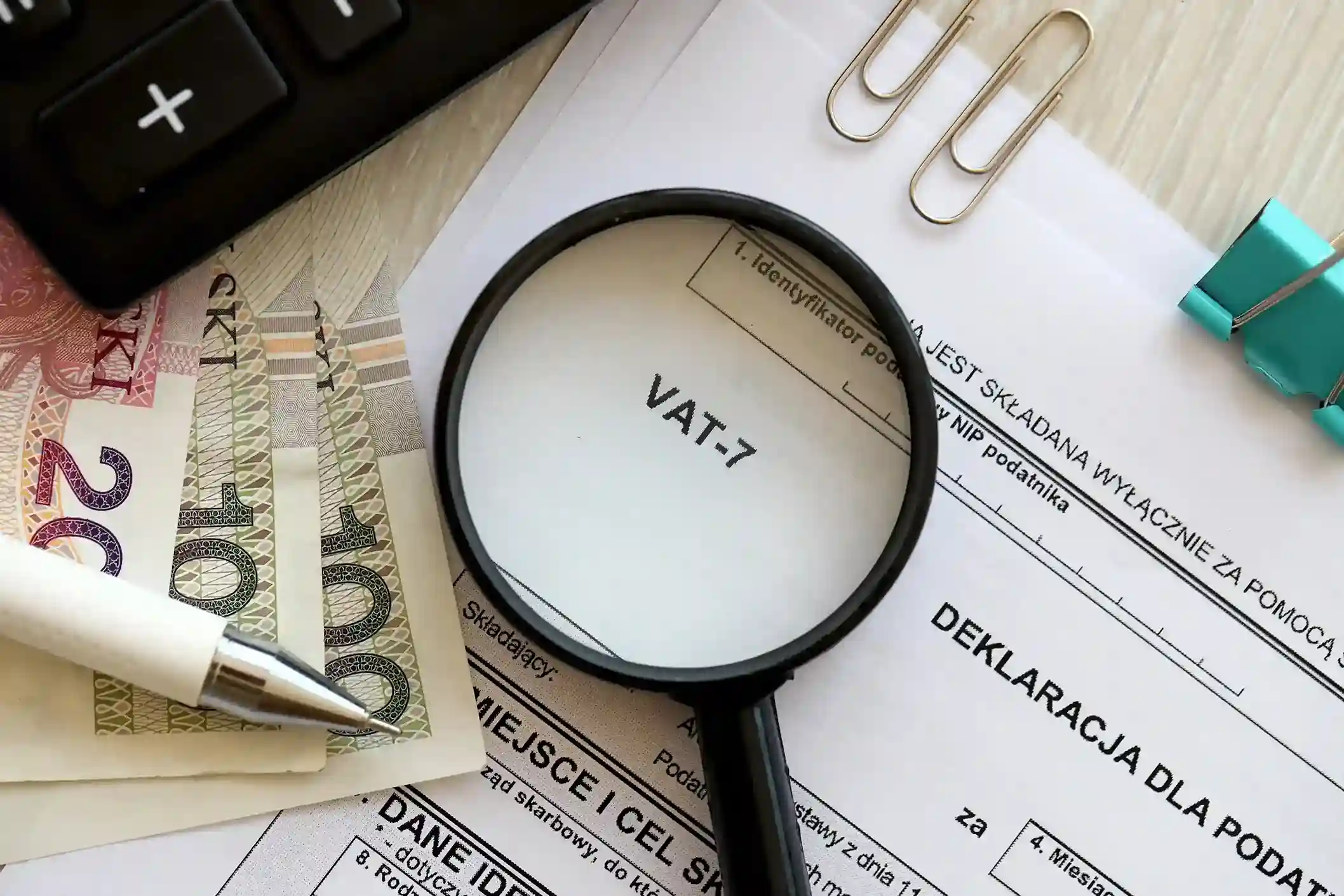UAE VAT Credit Notes Explained: 14-Day Rule, Format Checklist & Common Penalties


Table of Contents
UAE VAT Credit Notes Explained: 14-Day Rule, Format Checklist & Common Penalties
If you are running a UAE-based business, then you must be well-versed in how rigid and strict VAT compliance is.
There is one specific requirement associated with VAT credit notes in the UAE in particular where often-times confusion and ambiguity are caused amongst the finance teams and that is the condition that such notes are to be issued within 14 days.
If you issue a credit note after this given time frame, miss an important piece of information in the prescribed form, or fail to have proper and correct records in place, then you may be leaving yourself open to needless penalties and fines, and these may severely affect how your business runs.
Having worked for over a decade with multiple businesses within the United Arab Emirates, we have noticed an alarming amount of companies committing simple but avoidable mistakes associated with credit notes.
These mistakes could have been otherwise avoided if greater and clearer awareness of the rules and regulations governing this subject had been in place.
During the course of this article, we aim to carefully deconstruct the situations in which you are obliged to issue a VAT credit note and the reasons behind the same.
Additionally, we shall touch upon the crucial 14-day deadline to be complied with, the specialized checklist form that the Federal Tax Authority (FTA) wishes to be followed by businesses, and the associated penalties in case of submission of late credit notes within the UAE VAT framework.
During the course of this analysis, we shall provide practical case scenarios and valuable tips to be applied instantly to rectify processes and prevent avoidable mistakes.
Once you've read this article, you will be well acquainted with just how to ensure and maintain regulatory compliance and effectively shield your company from impending fines.
Table of Contents
- What is a VAT credit note in the UAE?
- Rules Governing VAT Credit Notes in the UAE: What is the Significance of the 14-day Timeframe?
- VAT Credit Note Format UAE: Checklist You Must Follow
- Frequent Errors Businesses Commit regarding Credit Notes
- Penalties for Late VAT Credit Notes in the UAE
- Understanding Why Accurate Credit Notes are Imperative in Safeguarding Your Business
- Complete Checklist for Business Organizations in the UAE
- Remain One Step Ahead through Compliance
- FAQs

What is a VAT credit note in the UAE?
A VAT credit note is an official document released in the event of a decrease in either the taxable amount or in the amount of VAT paid on a supply. This is released after an invoice has already been issued and raised, evidencing a change in the monetary transaction initially recorded.
Here are the instances where it might be necessary to have a credit note issued:
- Goods are brought back by a customer.
- You have issued an invoice with an incorrect price or incorrect VAT.
- Rebates or discounts are offered after billing.
- Services will be canceled when the billing procedure is completed.
Think of a credit note to be like the "reverse gear" in the system of issuing invoices. Just as the invoice is used to record revenue and the resultant VAT liability, the credit note is used to correct and reverse these entries. This correction is essential in ensuring the integrity and accuracy of your books.
Example: Your client buys some gear whose total amount is AED 10,000 and is subject to an additional amount of 5% Value Added Tax (VAT) worth AED 500. At a later time, the client returns some goods whose amount is AED 2,000. As a response to such return, it is necessary on your end to issue a credit note worth such amount of AED 2,000 plus an added amount worth AED 100 in VAT. This will consequently offset both your liability to output tax and the customer's claim in input tax.
If you are not issuing a correct credit note, then in your accounting books and in the VAT return, your revenue and tax values are displayed in an incorrect manner. This is likely to cause problems in the case of an audit.
Rules Governing VAT Credit Notes in the UAE: What is the Significance of the 14-day Timeframe?
One of the important and fundamental aspects of remaining in regulatory compliance is certainly timing.
As defined specifically by UAE laws governing VAT credit notes, it is specifically stated that businesses are required to provide a credit note within an absolute time frame of 14 calendar days from the date of issue once they become aware of having to issue such a note.
This date is not extracted from the date listed on the initial invoice but is extracted from the date the error, return, or adjustment is discovered and reported.
Why it matters:
- FTAs are interested in the prompt rectification of VAT records.
- Delays may distort the VAT returns and introduce mismatches in the suppliers’ and customers’ filings.
- Late filing may impose penalties.
- Practical guidance: Don't wait until the final week of the month or quarter to release credit notes. Train the accounts team to flag the adjustments immediately and release the document within the 14-day deadline.
VAT Credit Note Format UAE: Checklist You Must Follow
Numerous businesses tend to operate under the assumption that as long as they manage to minimize the quantity of information or resources involved, a straightforward and uncomplicated document will suffice for their needs. Regrettably, it is precisely at this juncture that errors and misunderstandings often occur.
The Federal Tax Authority, or in short, the FTA, necessitates a prescribed and exhaustive checklist in the form of VAT credit notes. It is mandatory that a legal credit note comprise the following:
- The caption should be clearly indicated and expressly labeled as a "Credit Note."
- Supplier details: Name of company, company address, TRN.
- Receiver details: Customer's name, address, TRN (if applicable).
- Date of issue: This is the date on which the credit note is actually produced and issued.
- Distinctive serial number: There has to always be a distinctive identifier on a credit note to identify the note and to distinguish it from other notes.
- This is a reference to the initial invoice, namely indicating the invoice number and the date currently being amended.
- Reason for issue: e.g., returned goods, post-supply discount, correction of error.
- Description of goods/services: Sourcing the identical initial supply.
- Amount adjustment: Net value, VAT amount, and total change.
- Supplier signature/authorization: Electronic or physical signature.
- Expert opinion: Some companies have been issuing so-called "partial credit notes" that, unfortunately, contain no full range of mandatory information usually expected. During an FTA audit, partial notes like these might be considered invalid and thereby carry an implication that your VAT liability may not be adjusted in the manner it is required to be. As always, best done by carrying out a full cross-check versus an agreed checklist to be on the safe side and prevent problems.
Frequent Errors Businesses Commit regarding Credit Notes
Through the years, we have analyzed many industries and have found the same errors over and over again to be repeated by organizations. The following are the biggest errors one should be on the lookout for and be cautious to avoid:
- One of the very common problems that tends to occur is the delayed release of credit notes, especially when companies or individuals miss the vital 14-day deadline.
- Not mentioning the initial invoice, which creates significant issues. Specifically, by not having this essential reference, the FTA is likely to deny the credit note.
- Leaving required fields blank, specifically TRNs and grounds of issue.
- Using debit notes instead of credit notes will result in a series of confusing papers, and this will further lead to the possibility of mismatched VAT returns.
- Not taking into consideration the credit notes in VAT returns. The form may be issued, but the return is not offset.
An illustration from real-world experience: One of the retail firms we audited produced credit notes in handwriting and without TRNs or invoice numbers. At the time of the audit, FTA rejected the adjustments and imposed a fine of AED 2,500 per invalid note. That amounted to several tens of thousands of fines.

Penalties for Late VAT Credit Notes in the UAE
The FTA is very strict when it comes to documentation. Non-compliance will be penalized.
The key penalties to which a person might be subjected in case of submission of late credit notes applicable to VAT in the United Arab Emirates, or submission of invalid papers, are as follows:
- For every non-compliant credit note issued, an AED 2,500 fine is issued.
- Late penalty fines in the event of non-compliance with the 14-day rule.
- More penalties for VAT audit in case of improper returns.
Note well that these particular penalties may be applied on an individual document basis, and not on an individual time period basis.
That is to say, if you manage to forget important information on multiple separate notes, the attendant monetary cost may multiply and rapidly escalate.
- Pro tip: Create an internal compliance calendar to be used effectively on a regular basis, or otherwise utilize sophisticated accounting software whose software is capable of automatically flagging cases when credit notes are to be issued. The adoption of automation in this regard considerably reduces the possibility of human mistakes and ensures all applicable deadlines are always adhered to without exception.
Understanding Why Accurate Credit Notes are Imperative in Safeguarding Your Business
Aside from penalty evasion, complying with the rules has clear business advantages:
- Properly completed VAT returns prevent disagreements with customers and the FTA.
- Customers greatly value professionalism and prompt and on-schedule rectifications in case of issues.
- Good documentation makes it easier to prepare for an audit.
- Management of cash flows is a critical process to ensure your VAT payments accurately reflect the real business dealings on which you are remitting.
From what we have experienced, firms that treat credit notes as a form of mere compliance often end up having bigger issues down the road. However, the organizations whose processes involve incorporating handling of credit notes from sales to finances rarely have issues upon audits.
Complete Checklist for Business Organizations in the UAE
Below is a concise but effective self-audit form that you may apply and make use of in your organization:
- Do you issue credit notes within 14 days after realizing the case?
- Does each and every note conform to the UAE VAT credit note format checklist
- Do you quote the original invoice?
- Do you ensure each credit note is properly recorded in your VAT return?
- Do you retain and maintain both electronic and paper copies for audit purposes?
If you answered either of these as a no, now is the time to mend your process.
Remain One Step Ahead through Compliance
Credit notes may well look like simple and inconsequential bits of forms on initial inspection, but they carry real compliance significance in the UAE context.
The rules governing UAE VAT credit notes mandate a rigid 14-day time frame for processing, in addition to a fine-point checklist of the required form to be followed.
Remember, penalties for failure to issue credit notes within time in the UAE VAT law are stringent, meaning that companies absolutely cannot indulge in shortcuts in this important segment of financial documentation.
Our tip after 10+ years in VAT compliance: consider credit notes an integral part of your invoicing process, and not an afterthought. Educate your staff, have appropriate templates, and do not wait until audit season to discover your documents are worthless.
If you are seeking peace of mind in your financial affairs, it may be beneficial to consider collaborating with a professional tax consultant who has the expertise to thoroughly review your credit note process.
Professionals can provide valuable insights and ensure that you are fully compliant with all applicable regulations and standards. Furthermore, the fee associated with hiring such a consultant is relatively modest when compared to the potential costs and penalties that can arise from non-compliance.
Seek our professional on-the-ground guidance, contact us via mail at info@radiantbiz.com, WhatsApp, or call us at +971521322895!
FAQs
1. Is it possible to issue a credit note electronically in the UAE?
Yes, as long as the document is in possession of all relevant information and is retained in a sound manner such that it is feasible to follow through on whatever audit procedures might be necessary, the e-credit notes are entirely acceptable according to the rules prescribed by the FTA.
2. What will be the results or implications if I give a credit note after 14 days have passed?
Late issuance will be penalized, and the FTA may decline to accept the adjustment in your VAT return. Always issue within the time limit.
3. Under the UAE VAT context, is a debit note similar to a credit note?
No. A debit note increases the taxable amount, and a credit note decreases it. The wrong document could result in a mismatch in the VAT return.



2.png)



.avif)